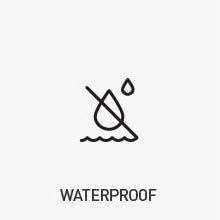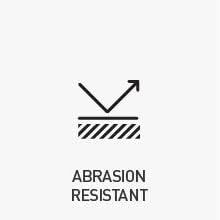Customer Services
Copyright © 2025 Desertcart Holdings Limited
Desert Online General Trading LLC
Dubai, United Arab Emirates










👟 Repair on the fly, stay unstoppable!
GearAid Aquasure +Sr Quick Repair is a 28g, multicolor, heat-resistant adhesive designed for fast, durable repairs on all types of footwear. Its concentrated formula ensures minimal shrinkage and strong bonding, making it ideal for year-round use by beginners and pros alike.







| Age range | Adult |
| Color | Multicolor |
| Size | 28 g |
| Weight | 28 g |
| Item display width | 5.5 inches |
| Number of pieces | 2 |
| Power source | Hand Powered |
| Seasons | Year-round |
| Skill level | Beginner |
| Features | Heat Resistant |
| Usage | Shoe |
| Sport | Camping & Hiking |
| Included components | Quick Repair |
| Batteries included? | No |
| Brand | Gear Aid |
| Department | Men's |
| Manufacturer | GearAid |
| Item model number | 10420 |
| Product Dimensions | 3.81 x 1.91 x 11.43 cm; 45.36 g |
| ASIN | B000PBTV0O |
F**L
It works!!
I think you can only really appreciate how good this stuff is if you have tried repairing shoes or boots without it. I've tried to do home repairs on boots and shoes when they were rejected by the cobblers and it is impossible to get a glue that both sticks and is flexible, and even ignoring that you still have the issue of what to stick onto the sole or heel. I know you can get rubber patches and heels to stick on but in practice they need a lot of shaping or the surfaces don't meet properly and I've never had one stay on for more than about 10 paces.This stuff on the other hand just works. It sticks flappy bits together and can also be used to build up a surface that you can walk on.To build up a heel or sole you have to use it on an upturned sole and dam it in with tape (eg electrical tape) or blu tack because it flows and takes maybe a day to set completely. You need to have a good think about what you can achieve in one go because you can only leave the shoe in one position while it sets and it may be that you need to take several sessions to repair different places. It's quite viscous and very sticky.Someone tipped me to store it in a freezer once opened, otherwise it sets in the tube. This appears to work but it isn't mentioned in the instructions.It is quite expensive for a tube of glue but that is offset against the fact that it actually works. I repaired the split sole on a boot and built up it's heel again. They were rejected as impossible to repair by the cobbler and would have cost about £50 to place with an equivalent. That was about 3 months ago and they are still going strong.Update: Two years later and the boots are still going strong, but time to build up that heel again.
S**A
Saved My Sole!
I was desperate to save my beloved ten year old walking boots which were letting in water, even a small amount of rain on the pavements was enough to get my feet soaking wet. There was a hole in the rubber welt at the front, plus a two inch split in the sole. I applied the glue as per the instructions (except I used surgical spirit to clean the rubber) As the hole and split went quite deep I did the repair in two stages, putting most glue on the first day, using a matchstick to poke glue into the hole. Left it to dry for 24 hours, then poked in a bit more and generally blended more around the welt and sole quite thickly, and as there was plenty of glue left I built up the somewhat downtrodden heel, too. Sprinkled salt on the areas in contact with the floor while it was still tacky, and pressed the back of a tea knife into the built up heel just before it completely dried to make ridges (for better grip). Once it was all dry, gave the boots a good spray with Punch suede protector. Of course it hasn't rained here since, so I went for a paddle in a local lake! I'm happy to report that my feet stayed dry, and I've walked a good few miles and the repairs seem intact. I'm so pleased because I've not been able to find any other boots that I can live with, and was even considering buying waterproof socks! I fully recommend this product.
B**N
Doesn't seal cracks as suggested
Bought this to repair some small tears in a pair of boots. Frankly a tube of super glue would work better. Contrary to the blurb the sealant isn't flexible and crackef on the first outing. It might stick soles but no use for fabric parts /uppers.
F**T
Sticks very well and quite tough, but not great
In the pack is:* The tube of goop.* A little brush.* A pair of polythene gloves.* A detailed information sheet.Reason for purchase:* I have a pair of Grade 1 used Alt-Berg Defender Boots (bought from elsewhere) which had more sole wear than I expected; the heels are severely worn and provide little grip and will wear through to the midsole soon.* There's also a little peeling of the sole away from the midsole at the heel on one boot, and a little gap opening up between the leather and the midsole on the other boot.* I am using Freesole to hopefully fix these issues and get more use from these boots.Process:* Wash the boots.* Clean the soles with Isopropyl Alcohol and a stiff brush (old paintbrush trimmed short).* Wrap sticky tape around the heel of each boot to contain the Freesole.* Using the small, supplied brush, work the Freesole into the grain of the rubber across the entire surface (greater surface area means greater adhesion).* With the boots held upside down on stable posts (I used a couple of large spent aerosol cans), fill in the worn area with Freesole* Leave for 2 days to set (with possible fiddling in the interim).My initial findings:* It's pretty goopy stuff but easy to work with; viscose but doesn't make long, awkward strings from the tube to the workpiece.* Use in a well ventilated area; it smells quite nice, but could make you queasy in a closed space.* It's pretty much self levelling, with a high surface tension causing it to form blobs in free space and a deep rise up the side of the sticky tape barrier. Direct from the tube, it's not thick enough to form a tread pattern; purposeful bumps mostly level out.* Although large bubbles are self expelled (which is good), minute bubbles are trapped in the liquid.After leaving to cure and a few days of walking:* As you can see in the last 3 images, the Freesole has cured (after about 72 hours) with a lot of bubbles trapped in it. These bubbles weren't at all as prominent when I left the boots to cure; it looks as if the compound kinda fizzed whilst curing.* The result is a somewhat foamy structure that started to crumble away at the edges almost immediately as I put them to use.* Because the compound cured from the outside in, I couldn't mold it as it set to form a tread pattern, so the surface is completely smooth with little undulation, which makes it quite slippy on some surfaces. The actual compound is quite grippy though, so if a tread can be molded from the start (wax coated paper-mache or something similar might work) the grip would be acceptable.* It appears to have bonded quite well with the original Vibram sole, but in a couple of places the high surface tension caused to Freesole to retract from where it was put to form blobs. At thinner points, the edges of the compound have peeled away a little.Updates to follow:I don't think the repair will last long, and will finish this review with more images and final conclusions soon.UPDATE: I'm afraid I was very busy whilst the Freesole wore off and didn't get a chance to set my camera gear up to show the process. Any picture now would just show a few slivers remaining around the heels.CONCLUSION: It sticks really well; as rubber (and rubbery) glue, it's very good stuff.I purchased for sole repair, including rebuilding of worn areas on the heels, but for this, it doesn't so much fail, but doesn't really perform that well either.Since it takes so long to cure, any repairs made with this stuff need to be planned and considered, so it's not much use for "quick and dirty" repairs where super glue would probably be far better.I'm glad I know it exists in case I ever need some for something, but for shoe repairs, I don't think this is the stuff for me. I have yet to try Shoe Goo or Gorilla Glue but look forward to giving them a bash, and in the meantime will stick with Evo Stick - pun intended ;-)
Trustpilot
2 months ago
1 month ago